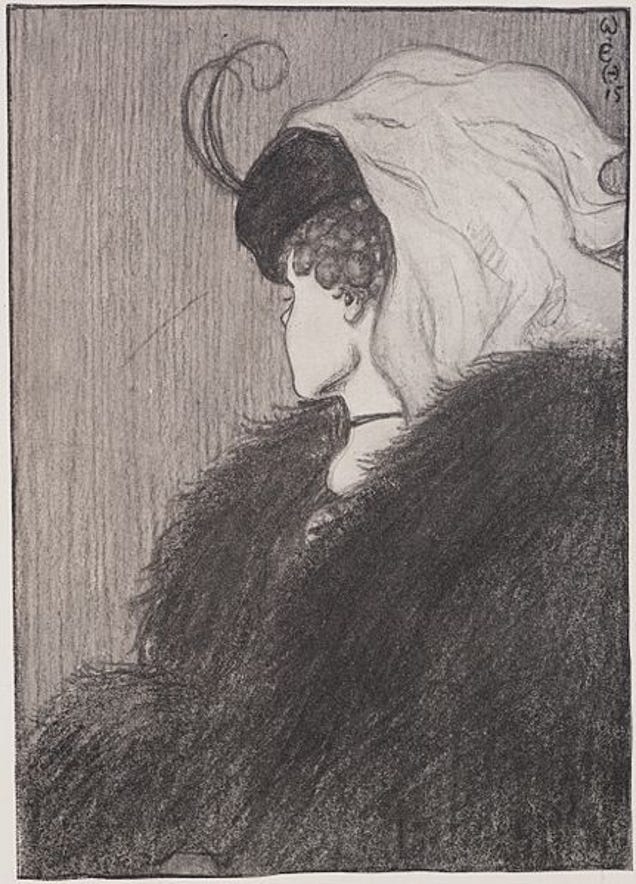Friday, April 14, 2017
Wednesday, April 12, 2017
Sunday, April 9, 2017
Ambiguous illusions
"Ambiguous illusions are so powerful because even after we know that both images are on the page, we can only see one of them at a time. When we see the young girl, we can't simultaneously see the lines in context of the mother-in-law. When we switch our perception, the young girl disappears and we only see the old woman...Essentially, when we focus in on certain details, our brain makes sense of the rest of the image around these contours. Ambiguous illusions show the way that vision is a work of both the eye and the mind. The eye takes in a set of lines, and, depending on what they are, the brain organizes them into a recognizable pattern which we then "see." We can't see both images at once, because, at least at first, it isn't possible for the brain to construct both images and overlay one on the other. While it is possible to train the mind into recognizing two sets of patterns at once, that fact that it is a process shows that "seeing" is still a matter of mental practice, not simply taking in an image passively with one's eyes."
Etymologies
lady (n.)
"c. 1200, lafdi, lavede, from Old English hlæfdige (Northumbrian hlafdia, Mercian hlafdie), "mistress of a household, wife of a lord," apparently literally "one who kneads bread," from hlaf "bread" (see loaf (n.)) + -dige "maid," which is related to dæge "maker of dough" (which is the first element in dairy; see dey (n.1)). Also compare lord (n.)). Century Dictionary finds this etymology "improbable," and OED rates it "not very plausible with regard to sense," but no one seems to have a better explanation.The medial -f- disappeared 14c. The word is not found outside English except where borrowed from it. Sense of "woman of superior position in society" is c. 1200; that of "woman whose manners and sensibilities befit her for high rank in society" is from 1861 (ladylike suggesting this sense is attested from 1580s, and ladily from c. 1400). Meaning "woman chosen as an object of chivalrous love" is from early 14c. Used commonly as an address to any woman since 1890s.
Applied since Old English to the Holy Virgin, hence many extended usages in plant names, place names, etc., from genitive singular hlæfdigan, which in Middle English merged with the nominative, so that lady- often represents (Our) Lady's, as in ladybug. Lady Day (late 13c.) was the festival of the Annunciation of the Virgin Mary (March 25). Ladies' man first recorded 1784; lady-killer "man supposed to be dangerously fascinating to women" is from 1811. Lady of pleasure recorded from 1640s. Lady's slipper as a type of orchid is from 1590s."
ladylike (adj.)
"also lady-like, 1580s, "refined, well-bred, courteous;" see lady + like (adj.). Middle English had ladily "queenly, exalted" (late 14c.)."Wednesday, April 5, 2017
Lady Grey: past productions
May 9 - 11 2014
Horn Rim Productions @ The Mix Studio Theater
Actor: Kristin Beckett
The Cutting Ball Theater
Actor: Danielle O’Hare
Director: Rob Melrose
February 2010
Inscription @ Griffin Theatre Company & Melbourne Theatre Company
Actor: Tanya Burne
Director: Julian Meyrick
Tuesday, March 28, 2017
What must a dramaturg do?
"To illuminate meaning in non-realism, dramaturgs do not trace a narrative or mine a character’s depths, but rather identify complex patterns of action, image, and language. They must encourage the spectator to see both what is present on the stage and also what is absent, unsaid...Because non-realism follows a different kind of logic and creates meaning in a different way than realism does, it redefines the processes of spectatorship and rehearsal. Working with non-realist productions changes the dramaturg’s role in the rehearsal process...Dramaturgs working with non-realism must cultivate more playfulness in their own questioning. They must open up meaning, not secure it. They must point to the gaps in the text not as holes to be filled in, but as sites of meaning that escape simple representation through language or image. They become less the source of answers and more the source of questions"(p. 50)
Tori Haring-Smith, Theatre Topics, 2003
Monday, March 27, 2017
Aliveness
"I do not think that what makes strong theater is accessibility at first instant, mainly because my first experiences in theater were not simple—I didn’t understand it. But I did sense that there was something there. I find immediate accessibility easily forgettable. All the great theater experiences I’ve had have either been too long, or too difficult, or I’ve had to reach...I don’t necessarily think that the sign of a good work is where you have to come back to understand it; I don’t understand most of my work. I have to look at it and constantly redefine what it is. If I did understand it, it probably would not be as volatile. I don’t think that understanding is necessarily the best thing in art."
"What is?"
"Aliveness. In the theater, certainly a sense of event. A sense of human beings reaching towards something, a sense of inspiration. As in great music: you are taken to a place where you are not in familiar territory, where one encounters new landscapes. That’s what I want in the theater. I want the audience to be in new territory, I want myself to be in new territory. I mean, I am the audience, ultimately."
"...all of the detours are part of the research"
Subscribe to:
Posts (Atom)


